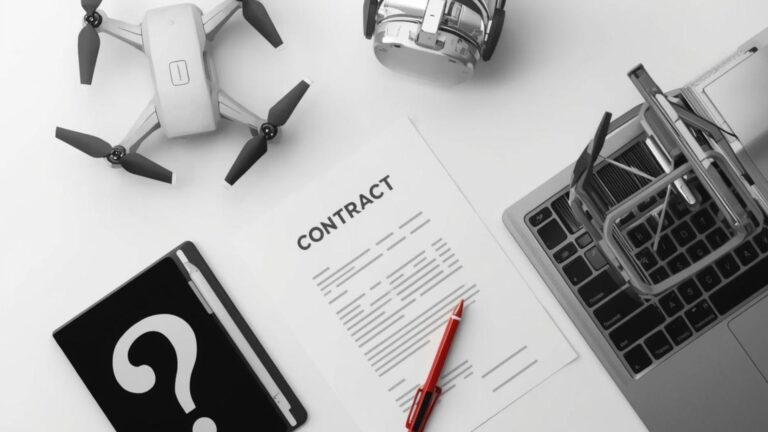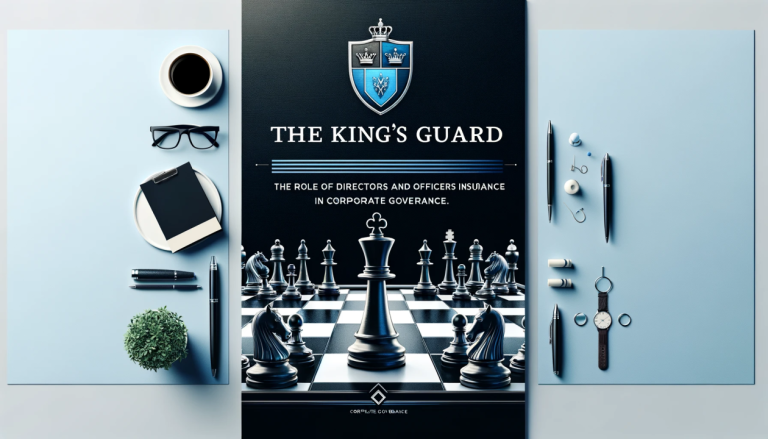In the world of business insurance, two commonly confused coverages are Directors & Officers (D&O) liability and Errors & Omissions (E&O) liability. Both protect companies from costly lawsuits, but they apply to very different situations. For technology startups and high-growth firms, understanding D&O and E&O is crucial – these policies safeguard your leadership and your services, respectively. This guide will explain what each coverage entails, why they matter, and how they differ, so you can ensure your company isn’t left exposed.
What Does D&O Insurance Cover?
D&O insurance is designed to shield a company’s directors and officers (and often the company itself) from legal claims alleging wrongful acts in the management of the business. In simpler terms, it covers lawsuits over management decisions. If a shareholder, investor, creditor, or other stakeholder accuses your leadership of things like misrepresentation, breach of fiduciary duty, or failing to comply with laws, a D&O policy will pay for legal defense and any settlements or judgments (up to the policy limit). This means the personal assets of your CEO, founders, and board members are protected if they’re sued for doing their jobs.
Typical D&O claims might involve:
- Investor lawsuits: e.g. a venture capital fund sues the board claiming they mismanaged the latest funding round or gave misleading financial reports.
- Regulatory actions: e.g. a government regulator investigates the company and its officers for violating securities laws or data privacy regulations, incurring legal defense costs.
- Employee and competitor claims: e.g. a former employee alleges the executive team allowed a culture of harassment (this can overlap with employment practices coverage), or a competitor sues, saying a decision by your officers amounted to unfair competition.
Without D&O insurance, the company (or the individuals) would have to pay out of pocket to defend these claims. For startups, one serious lawsuit could be financially ruinous. D&O policies ensure that if leadership is challenged in court, there’s an insurance company footing the legal bills and settlements. Notably, D&O insurance has become a must-have once you take on outside investment or form a board – many investors will insist on it as a condition of funding to protect their position.
What Does E&O Insurance Cover?
E&O insurance (Errors & Omissions), often called professional liability, covers your company when a client or customer claims that your product or service caused them a financial loss. It’s about protecting you from lawsuits over your work quality or mistakes. If your software crashes and knocks a client’s online store offline, or your algorithm delivers flawed results that harm a client’s business, they could demand compensation – that’s where E&O responds. It pays for legal defense, court costs, and damages or settlements if you’re found liable for an error or failure in your professional services.
Common scenarios for E&O claims include:
- Performance failure: Your SaaS platform goes down for an extended period, and a customer loses revenue due to the downtime, leading them to sue for breach of contract.
- Negligence or mistakes: A coding error in your app causes a data corruption for clients, or a tech consulting recommendation you gave a client turns out to be faulty and they suffer losses – they claim you were negligent.
- Missed deadlines/scope issues: You fail to deliver a project milestone on time or as promised, and the client incurs costs or penalties as a result.
E&O is essential for any company that provides technology services or products to customers – essentially, most startups. In fact, many B2B clients will require vendors to carry E&O coverage (and show a certificate of insurance) before doing business. One contract dispute or lawsuit over a mistake can easily exceed a young company’s cash reserves, so having E&O ensures that a single error doesn’t financially devastate you. E&O policies also often cover your legal defense even if a claim is meritless – which is crucial, since defending a lawsuit (even an unfounded one) can cost tens of thousands in attorney fees.
D&O vs. E&O – Different Protections for Different Risks
It’s important to understand that D&O and E&O insurance address completely separate risk areas. D&O protects the company and its leaders from lawsuits about how the company is run, whereas E&O protects the company from lawsuits about the work or product it delivers to clients. Put another way, D&O covers “management mistakes” and E&O covers “professional mistakes.”
Some key differences and points of complementarity:
- Who is protected: D&O primarily protects individuals in leadership (and the entity) when they’re sued by investors, regulators, or other third parties for governance issues. E&O protects the company (and sometimes its employees) when a client blames your performance or product for a loss.
- Nature of claims: D&O claims often allege things like mismanagement, lack of oversight, or breach of duty – often brought by shareholders or authorities. E&O claims allege subpar work, mistakes, or failure to meet contractual obligations – brought by customers or clients. The former is about corporate governance, the latter about service delivery.
- Why you likely need both: These coverages don’t overlap. A tech company that has outside investors and a board, and also provides a product to customers, has exposure on both fronts. If you only carry E&O, your board is unprotected from investor suits. If you only carry D&O, a client lawsuit over a mistake could still cripple you. Most startups and established businesses alike carry both policies to stay fully covered.
It’s worth noting that both D&O and E&O are typically “claims-made” insurance policies, meaning they cover claims made during the policy period (as opposed to covering incidents that occur during the period). This is a technical point, but it underscores that you need to keep these policies active continuously – if there’s a gap in coverage, a later claim might not be covered. Always discuss continuity of coverage with your broker if switching insurers or if your policy is expiring.
Conclusion
D&O and E&O insurance serve different masters, but together they create a comprehensive shield for your business. D&O protects the visionaries steering the company, while E&O protects the product and service outputs that are the company’s lifeblood. For a tech or growth enterprise, both policies are essential pillars of a solid risk management strategy – one guarding against boardroom battles, the other against customer disputes. Overlooking either could leave a critical gap. By securing both, you ensure that whether a claim comes from an unhappy investor or an unhappy client, you have the resources to handle it and keep the business on track.
Key Take-aways
- D&O vs E&O defined: D&O insurance covers lawsuits over management decisions (protecting directors/officers), while E&O covers lawsuits over mistakes in delivering your services or product (protecting the company from client claims).
- Distinct but complementary: These policies cover different risks and one cannot substitute for the other. Companies with investors/boards and customer obligations typically need both to be fully protected.
- Stakeholder requirements: Investors often require D&O coverage before funding, and clients may require proof of E&O coverage before signing contracts. Having both in place opens doors and builds trust with these stakeholders.
- Financial safety net: In the event of a lawsuit, D&O and E&O policies pay for legal defense and settlements, preventing a costly claim from derailing your business or bankrupting its leaders.
What to do next
- Evaluate your exposure: Consider your company’s situation – do you have a board or outside investors (pointing to D&O need)? Do you provide a product/service to customers (pointing to E&O need)? Most startups will check yes to both.
- Prioritize obtaining coverage: If you lack either policy, talk to an insurance advisor about getting coverage in place. Many insurers offer management liability packages (bundling D&O with related coverages) and separate tech E&O packages for startups.
- Educate your team/board: Ensure your leadership understands what D&O covers and that your project managers and developers understand E&O. Often, good corporate governance and quality control can prevent claims – but insurance is there as a backstop.
- Maintain continuous coverage: Once you have these policies, keep them active. Renew on time each year and adjust limits as you grow. Consistent coverage ensures you won’t be caught off guard by a timing exclusion if a claim arises.
Need a deeper dive into these coverages? Explore our detailed articles on Directors & Officers Insurance and on E&O vs D&O differences for more insights.



















































































































